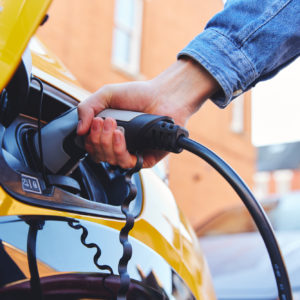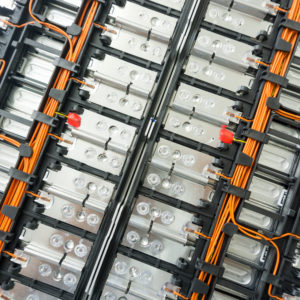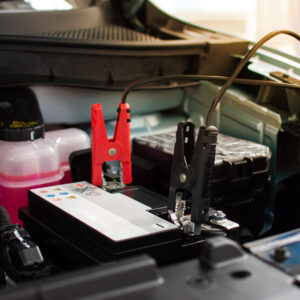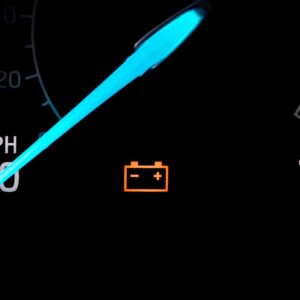For electric vehicles (EVs), the battery is the heart and soul of their entire system. There are no internal combustion engines to pick up the pace when the battery is low on charge一unless you’re driving a hybrid, which is a totally different thing.
Given the importance of batteries in EVs, it’s only fitting that drivers know how to take care of them and which factors can affect degradation.
Is Fast Charging Bad for Your EV Battery?

Not necessarily. Fast charging between seven and 22 kW won’t have any negative impact on your vehicle, provided that you’re also observing good charging habits.
Fast Charging vs. Rapid Charging
Fast and rapid chargers have grown in popularity over the last few years, especially in dynamic environments where being on the go is always a must.
While both chargers are capable of speeding up the charging process, they have significant differences that you should take note of.
Fast Charging
Fast charging typically has a chargepoint that ranges from seven to 22 kW. To charge an EV battery, alternating current (AC) needs to be converted into direct current (DC) via a converter in the EV.
When using a fast charger, the conversion to DC occurs within the charger instead of the car. And because the charger does this job instead of relying on the EV’s onboard computer to convert AC into DC, the vehicle can charge at a faster rate.
In most cases, a fast charger takes less than an hour to charge a battery up to 80%. Once this threshold has been achieved, the EV will slow down the rate at which it accepts or receives charge.
Most modern EVs have state-of-the-art battery management systems that protect battery capacity and performance even when using a fast charger.
Rapid Charging
Rapid charging can bring an EV battery to full charge in under 30 minutes. Generally, rapid chargers have chargepoints that can reach up to 150 kW.
While using a rapid charger certainly sounds tempting because of how convenient it is, experts warn against the disadvantages of using one due to its impact on battery health and its added cost.
While fast charging has negligible effects on battery health, the same principle might not apply to rapid charging.
Experts recommend using rapid chargers only when drivers are in a hurry. Other than that, fast chargers should work fine.
EV Charging Options
There are several ways you can charge an EV. Here are some of the most common charger types and speeds you might encounter.
Level 1 Charging
Level 1 charging uses a standard EV charger that works with a 12-volt AC outlet. It’s the most basic form of EV charging and usually takes 40 to 50 hours to get an EV to 80% of its battery capacity from empty.
Meanwhile, plug-in hybrid EVs (PHEVs) might require around five to six hours of charging time.
Level 2 Charging
Level 2 chargers generally work with 240V or 208V AC outlets. It’ll take anywhere between four and 10 hours of charging time to get an EV to 80% from empty when using this charger, while PHEVs will need an hour or two of charging time.
Direct Current Fast Charging
Direct current fast charging, also known as rapid charging, only takes a few minutes up to an hour to get an EV to 80% from empty.
Rapid chargers are typically found in heavy-traffic corridors and other public locations, such as grocery stores, coffee shops, and more.
Preserving EV Battery Health
EV batteries don’t come cheap, so drivers are always looking for ways to keep their factory batteries around for a long time.
While EV batteries are made to last, you should also do your part to extend their service life. Here are some things you can do to preserve your EV’s battery health.
Observe Ideal Charging Practices
Several manufacturers recommend keeping your battery’s charge above 20% and not past 80%. Once the battery hits 80%, the EV will slow down charging on its own.
Some EVs let you set up charging limits. Depending on the vehicle’s specifications, this process might take a while, but it’s worth trying out to ensure battery longevity.
Maintain Optimal Battery Temperature
Extreme temperature is one of the leading causes of battery wear. Extreme heat or cold can easily damage the battery’s lithium-ion cells, reducing its service life.
If your EV is capable of monitoring temperature, be sure to look out for alerts. In some Nissan EVs, for example, a significant drop in temperature causes the vehicle to display a low-temperature alert.
Once this happens, the driver is advised to turn on the battery heater for at least 30 minutes before driving.
Aside from the battery, it’s also a good idea to check your EV’s battery management system from time to time.
Issues with this system can display inaccurate readings and information, causing your battery to wear out faster than its intended service life.
EV Battery Charging FAQs
How Long Do EV Batteries Last?
EV batteries can last anywhere between 10 and 20 years before needing a replacement.
There’s a probability that you’ll notice a year-on-year reduction in your battery’s overall capacity, but it shouldn’t affect your driving when you’re not traveling long distances daily.
What Factors Affect EV Battery Longevity?
Battery age, temperature, state of charge, battery chemistry, and battery system and thermal management are some of the factors that affect EV battery longevity.
How Long Before EV Batteries Start to Degrade?
According to research, EV batteries degrade by about 1.8% every year.
Does Frequent Vehicle Use Affect Battery Longevity?
Frequent vehicle use doesn’t exactly contribute to battery degradation. EVs are known to deliver better values when driven frequently.
Any information provided on this Website is for informational purposes only and is not intended to replace consultation with a professional mechanic. The accuracy and timeliness of the information may change from the time of publication.




















